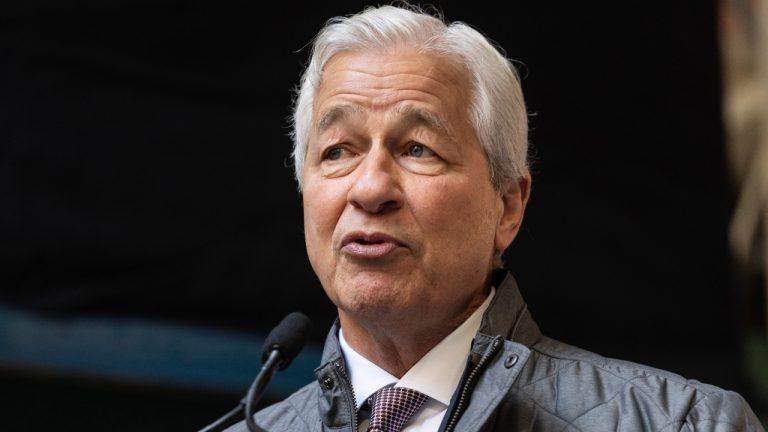
Bank of England’s Opinion on Cryptoassets and Decentralized Finance
HodlX Guest Post Submit Your Post
My take on the UK apex bank’s opinion on crypto assets and DeFi and its move to regulate the crypto industry.
Following the recent release of a 40-page report by the Financial Policy Committee (FPC) of the Bank of England, I decided to put my pen to paper in the form of a review – or should I say an analysis of the opinions and thoughts of the UK’s apex bank on crypto assets and DeFi.
Having said that, this is a review article, and I hope to make it as simple as possible for those who may find it cumbersome to go through the forty-page article. I will be reviewing the report based on the various headings raised in the report, and it will not be a comprehensive review per se – but I will review statements that stand out to me in the body of work.
So, just a heads up, this article is subjective and is colored by the lens of what I consider to be “standout-ish.” Without further ado, let’s dig in. I bet you will learn a thing or two by the time you get to the last sentence.
What is the role of crypto assets and DeFi in the financial system?
Now, for proper understanding of the review and the report if you decide to read it later, the report focuses on the UK’s financial system, which may be different from other systems.
Crypto assets – unbacked and volatile?
The FPC’s view of crypto assets is as unbacked, non-replicable strings of computer code that have no intrinsic value. According to their assessment,
“Currently, the vast majority of crypto asset activity is driven by the use of highly volatile, unbacked crypto assets as speculative investment assets.”
Being unbacked, which has led to high volatility, has been a major downside for cryptocurrencies, in my opinion. I mean, you can be a millionaire today and wake up to an empty wallet tomorrow. The number of crypto assets out there is growing by the day. Each day sees a new NFT (non-fungible token) project launched, a new ICO (initial coin offering), etc.
The “cryptosphere” is growing rapidly but the question remains – what is behind all these coins and crypto assets being floated on a daily basis? Do they have the necessary utility to stand the test of time? Well, this is why it is imperative to do your own research before investing.
These characteristics (that is, being unbacked and volatile), according to the FPC, make crypto assets unstable and vulnerable to major price corrections. The instability is actually like a double-edged sword, which means that the value of a crypto asset in the markets can rise by over 1,000 times in a short period and crash to zero within that same time.
Still, on the volatility of crypto assets, the FPC believes that Bitcoin returns are three times as volatile as the S&P 500. This is not an ‘off-the-top’ claim – they had facts and figures backing it.
So, what was their verdict on unbacked crypto assets? The report states,
“This price volatility makes unbacked crypto assets unsuitable to be widely used as money – for example, as a means of exchange or a store of value.”
With the number of fluctuations in the value of cryptocurrencies, it is a poor store of value – poor only when the market dips, anyway. In a bull market, who cares about crypto being a store of value?
Our darling stablecoins
If there are unbacked crypto assets, then there must be backed crypto assets. This is where the FPC took sides. Their report warmed up to stablecoins and went as far as seeing a future for it in the traditional financial system.
So, what future did the report see for stablecoins? The report said,
“Given their perceived or purported relative stability in value, stablecoins may have greater potential to become widely used in payments, compared to unbacked crypto assets.”
With this statement, they effectively took sides with backed crypto assets and predicted a promising future for stablecoins. They also added,
“If appropriately designed, stablecoins could offer lower cost, real-time payments services, while also maintaining a reliable store of value.”
Beyond payments, another future use case the FPC sees for stablecoins is as an alternative to commercial bank deposits. They see it as a possible means of storing household wealth.
Financial stability implications of crypto assets and associated markets
The report started the second section by extolling what it calls ‘crypto technology.’ It highlighted certain areas where this technology would improve the existing financial system.
But before I go into that, the report raised an important point about the interlinkages between cryptocurrencies and the traditional financial sector. According to the report,
“Cryptoassets and associated markets – including crypto asset derivatives and crypto asset funds – have grown rapidly over recent years, and should they continue to do so. Interlinkages with the traditional financial sector are likely to increase.”
This marriage is an inevitable one, and even with the coming wave of regulations, crypto assets and DeFi will compete favorably with traditional financial assets. So, we will be overstretching our speculations by believing that decentralized finance (DeFi) will replace traditional finance (TradFi). I believe both will coexist, and DeFi also has some competitive advantages even when subjected to the same regulations as TradFi.
Blockchain / Decentralized Ledger Technology (DLT) — a game changer?
It is funny, though, that the report talked about blockchain technology without mentioning blockchain. It is either called ‘crypto technology’ or in more formal settings, Decentralized Ledger Technology (DLT). The FPC sees the technology as a game changer, according to the report, saying,
“The new technology has the potential to reshape activity currently taking place in the traditional financial sector – through either the migration of that activity or the widespread adoption of the technology.”
I believe the latter is the path taken at the moment, and it will be sustained in the future. When you examine the benefits of blockchain technology, you can’t help but notice its wide-reaching application in the financial system and beyond.
The report listed several benefits blockchain technology could bring to the traditional system but all these were hinged on the clause,
“Provided that they are safe and stable in value.”
The first usefulness it pointed out was in cross-border transactions, where it highlighted one of the basic knowledge about DLT. This is because the decentralized nature of the technology reduces the cost and makes cross-border transactions faster by cutting out centralized intermediaries. Further speaking on this point, the report made a point about regulation that was indeed a revelation for me.
“If undertaken within a well-designed and proportionate regulatory regime, this technology could increase competition in the UK financial system, further lowering costs to end users.”
This statement gave me a ‘eureka’ moment because I was of the school of thought that decentralization makes cryptocurrencies anti-regulation. But seeing this gave me a reason to rethink that stance. Regulation, when properly crafted without any form of bias and with due consultation of all the experts in the field, would see crypto and DeFi blossom beyond our wildest dreams. I think this is where I am in my view on regulation.
Moving forward, the document added efficiency, transparency and resilience as part of the advantages of crypto technology. Speaking of resilience, the FPC believes that,
“New forms of digital money could also increase the resilience of the financial system by providing an alternative to traditional modes of payment.”
Risk, risk, risk – are crypto and DeFi riskier than other financial systems?
The report highlights the risks associated with what it called ‘crypto asset technology,’ which include financial risks arising from direct exposures or spillovers between markets, operational risks arising from the use of new technology and regulatory and stability challenges as activity migrates or new forms of entities and business models emerge.
Cryptoassets and DeFi are considered risky by many, and that is a fact. Some regulators even push this point to some extreme, but the big question here is – how risky is DeFi? How much riskier is it than other parts of the financial system?
The report answers this question, and here’s what it says about the risks posed by crypto assets compared to other parts of the financial system.
“Many of the risks posed by crypto assets and DeFi are similar to those managed by the existing regulatory framework in other parts of the financial system.”
So these risks do not make crypto assets undesirable and with proper regulation – which in my opinion is meant to weed out malicious actors and make DeFi run as smoothly as possible – these risks can be managed to bring out the best of this novel technology.
I will end the first part of this article here, while the follow-up will address the last two parts of the report. It will analyze the four channels identified by the FPC through which the risks posed by crypto assets and DeFi can affect financial stability and also the regulatory framework suggested.
Samuel Ogbonna is a crypto content writer and blockchain enthusiast who is interested in DeFi, NFTs, Web 3.0 and the metaverse.
Follow Us on Twitter Facebook Telegram

Disclaimer: Opinions expressed at The Daily Hodl are not investment advice. Investors should do their due diligence before making any high-risk investments in Bitcoin, cryptocurrency or digital assets. Please be advised that your transfers and trades are at your own risk, and any loses you may incur are your responsibility. The Daily Hodl does not recommend the buying or selling of any cryptocurrencies or digital assets, nor is The Daily Hodl an investment advisor. Please note that The Daily Hodl participates in affiliate marketing.
The post Bank of England’s Opinion on Cryptoassets and Decentralized Finance appeared first on The Daily Hodl.
Go to Source
Author: Samuel Ogbonna









